Exploring Sand Mold 3D Printing Casting Process
2024-12-13 14:08:16 hits:0
With the rapid advancement of industrial manufacturing technologies, 3D printing has gradually penetrated various industries. In particular, the sand mold 3D printing casting process, as an innovative technology, is increasingly becoming the ideal choice for manufacturing complex parts. Compared to traditional sand casting, sand mold 3D printing offers significant advantages such as higher design flexibility, shorter production cycles, and lower production costs. However, despite its prominent advantages, the sand mold 3D printing casting process also faces certain challenges in its application. This article will analyze the advantages and disadvantages of the sand mold 3D printing casting process and explore its potential applications in various fields.
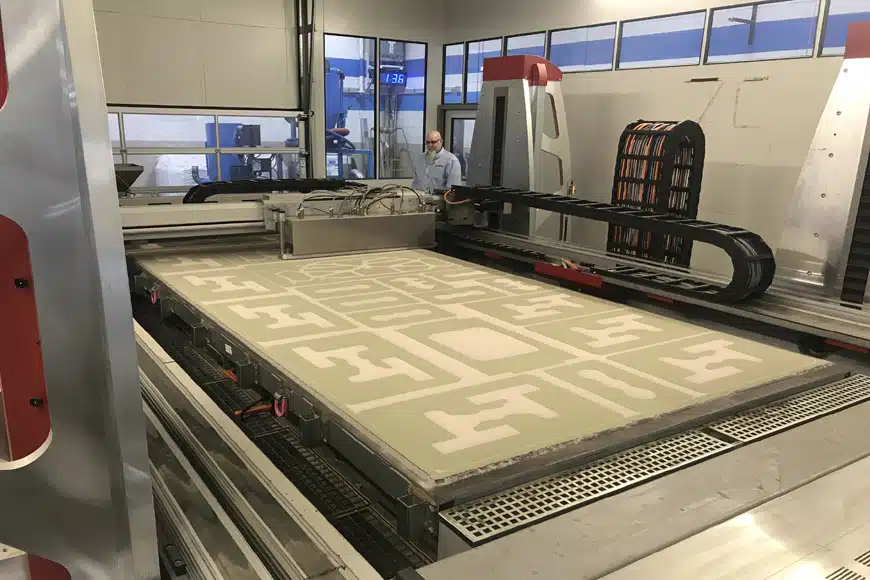
Overview of Sand Mold 3D Printing Casting Process
The sand mold 3D printing casting process uses computer-aided design (CAD) and additive manufacturing technology to directly print sand molds, eliminating the traditional manual molding process. This technique is used to create molds, shells, and certain complex internal structures for parts. With this technology, casting production can be completed in a much shorter time, and it allows for the creation of parts with complex shapes and higher precision.The sand mold 3D printing process typically follows these steps:
1.Design and Modeling: CAD software is used to create a 3D model of the part, which is then converted into a file suitable for 3D printing.
2.Printing the Sand Mold: The design file is loaded into the 3D printer, which uses sand and binder materials to print the mold layer by layer.
3.Casting: The traditional casting process is used to pour molten metal into the sand mold to form the final part.
4.Post-Processing: The mold is removed, and the cast part is cleaned and undergoes any necessary machining or finishing.
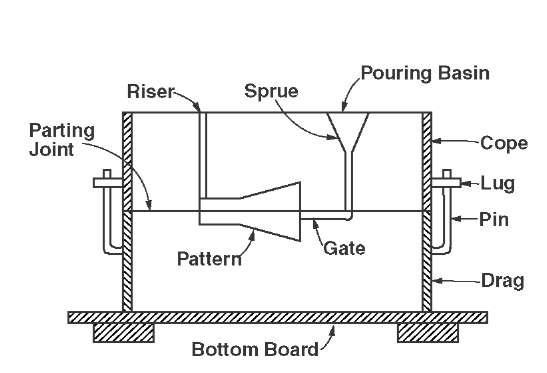
Advantages of Sand Mold 3D Printing Casting Process
1.High Design Flexibility and Capability to Create Complex Structures
One of the greatest advantages of sand mold 3D printing is its ability to manufacture complex geometries. Traditional sand casting is limited by mold-making processes, making it difficult to create intricate internal structures or irregular shapes. Sand mold 3D printing, however, can directly print molds with highly complex internal features, hollow structures, and even shapes that are impossible to achieve with traditional methods. This ability to create intricate designs meets the increasing demand for functionality and performance in modern industrial parts.2.Shorter Production Cycle and Lower Mold Costs
Traditional sand casting requires manual labor to create molds, which can take a long time, especially for complex molds. In contrast, 3D printing allows for molds to be generated directly from digital designs, significantly reducing production time. For small-batch production and custom parts, 3D printing’s advantages are particularly evident. It can also expedite prototype production and testing, allowing faster iterations of designs.3.Reduced Material Waste and Enhanced Efficiency
Traditional casting processes often result in significant material waste when creating sand molds. Sand mold 3D printing, however, uses materials only where necessary, which minimizes waste. The precise layering of materials in 3D printing results in a more efficient use of resources, reducing material consumption and making the process more environmentally friendly and cost-effective.4.Improved Precision and Surface Quality
The precision of sand mold 3D printing is higher than that of traditional casting, allowing for the creation of molds with greater detail and fewer post-processing requirements. The printed molds have smoother surfaces, reducing the need for extensive cleaning and finishing of the cast parts. Additionally, 3D printing can minimize casting defects such as air pockets or cracks, which improves the overall quality of the final product.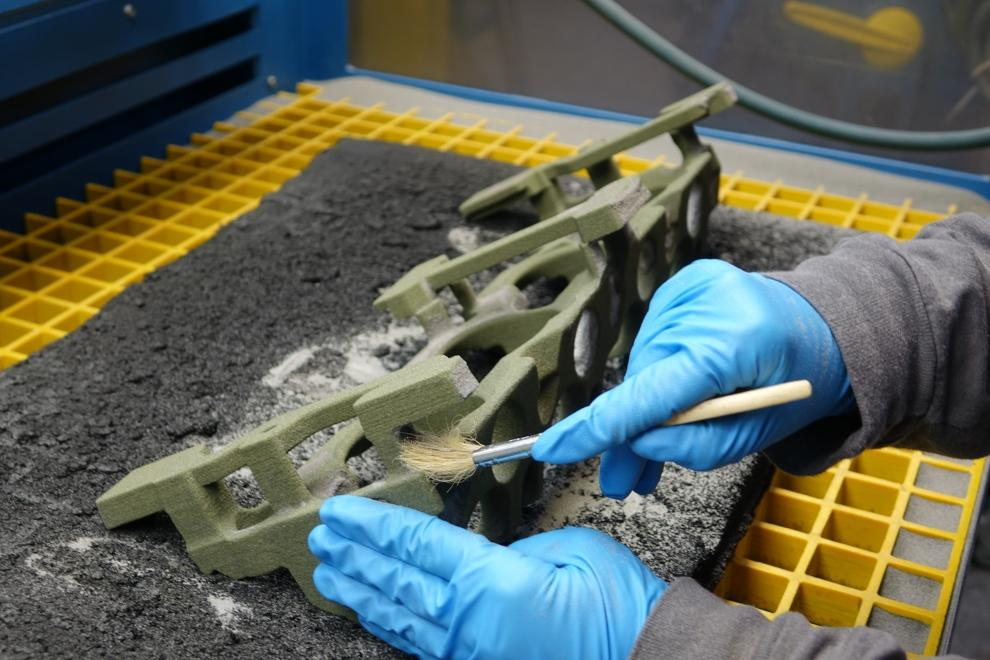
Disadvantages of Sand Mold 3D Printing Casting Process
1.Limited Material Selection
Currently, the materials used in sand mold 3D printing are relatively limited, primarily consisting of sand and binders. Traditional sand casting, on the other hand, offers a wider variety of materials that have better high-temperature resistance and stability. Although new materials for 3D printing are being developed, the material options for sand mold 3D printing are still not as diverse as those for traditional casting, limiting its application for certain high-performance parts.2.Limited Printing Speed, Suitable for Small-Batch Production
While 3D printing offers unique advantages in creating complex parts, its printing speed is slower than that of traditional casting. For large-scale production, 3D printing may require a longer time compared to traditional methods. Therefore, sand mold 3D printing is more suitable for small-batch production and customized parts. For mass production, traditional casting processes are still more efficient.3.High Initial Investment and Equipment Maintenance Costs
High-precision 3D printing equipment tends to be expensive, particularly for metal casting applications. For small to medium-sized enterprises, the initial investment in such equipment can be a significant cost. Additionally, maintaining, operating, and training personnel to handle these machines require further investment, which may pose a challenge for businesses with limited budgets.4.Time-Consuming Post-Processing
Although 3D printing can create highly precise sand molds, the printed molds may still require post-processing, especially in large-size molds. These additional steps may include removing support structures, cleaning surface defects, and other finishing tasks, which can add to production time and costs.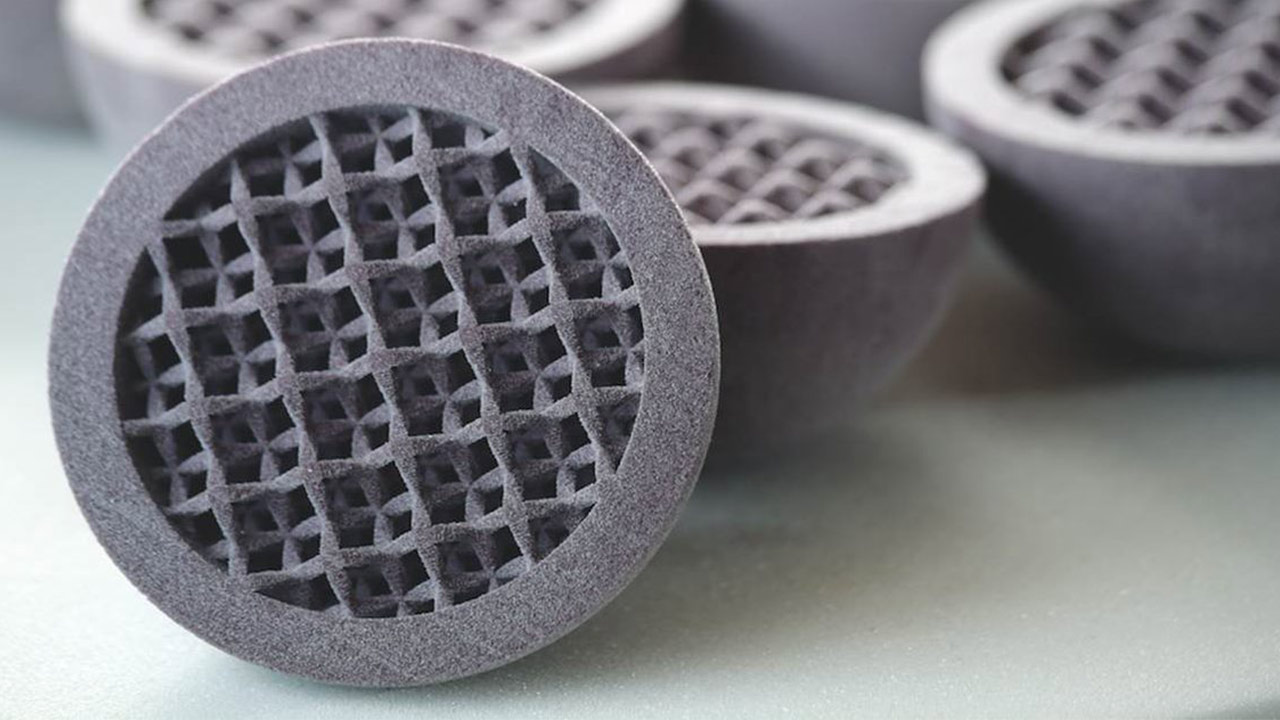
Application Prospects of Sand Mold 3D Printing Casting Process
Despite its limitations, the sand mold 3D printing casting process holds significant potential in a wide range of industries.1.Aerospace Industry
The aerospace industry demands high-precision, high-performance parts, particularly in the manufacturing of complex internal structures and lightweight components. Sand mold 3D printing can meet these requirements by creating complex parts that reduce traditional material waste and improve overall part performance. In applications requiring high heat resistance and strength, sand mold 3D printing is likely to be a game-changer.2.Automotive Industry
In the automotive sector, the demand for lightweight, high-performance parts is growing, and sand mold 3D printing can help produce complex engine components, drivetrain parts, and more. This technology not only meets high design standards but also shortens development and production cycles, reducing manufacturing costs.3.Small-Batch and Customized Manufacturing
For small-batch production, especially for customized parts, the sand mold 3D printing casting process presents a significant advantage. Without the need for complex mold making, sand mold 3D printing allows parts to be produced directly from digital designs, which reduces setup time and cost. This is particularly beneficial for prototype production, art reproduction, and customized industrial components.4.Mold Manufacturing Industry
Sand mold 3D printing has broad applications in the mold manufacturing industry. For complex molds, 3D printing can drastically shorten mold production times and increase design flexibility. During new product development, 3D printing technology allows for quick prototyping and testing of parts, reducing the time spent iterating mold designs compared to traditional methods.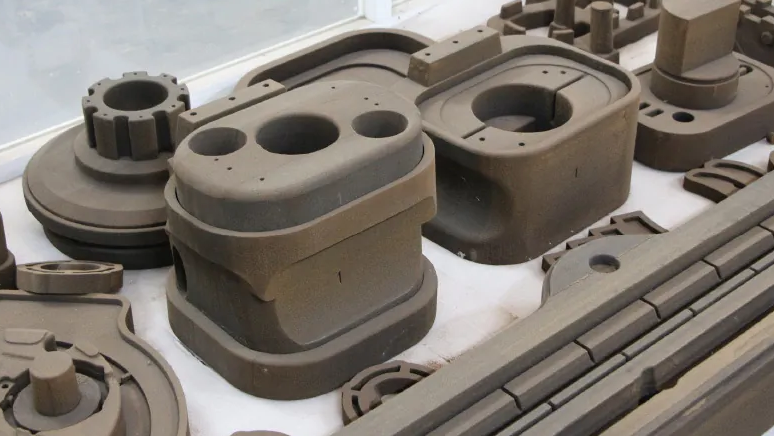
Sand mold 3D printing casting technology is an emerging, innovative process that is gradually transforming the traditional casting industry. Its unique advantages, such as greater design flexibility, shorter production cycles, and reduced material waste, make it a promising solution in various high-end manufacturing fields. However, challenges such as material selection, production speed, and equipment costs remain. As technology continues to improve, sand mold 3D printing casting is likely to play an increasingly important role in more industries, offering both flexibility and efficiency.

 en
en  fra
fra  de
de  ru
ru  gle
gle  th
th  ara
ara  it
it  jp
jp  kor
kor  zh
zh 


